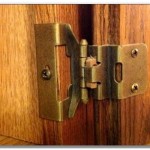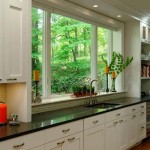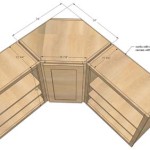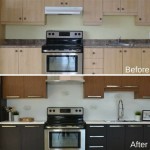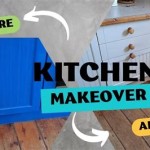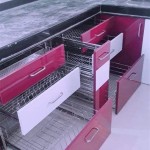Cost To Install Pull Out Shelves In Kitchen Cabinets
Pull-out shelves, also known as roll-out trays or sliding shelves, provide a convenient and efficient storage solution for kitchen cabinets. They enhance accessibility, organization, and overall usability, thereby increasing the value and functionality of the kitchen space. Installing pull-out shelves can transform cluttered, hard-to-reach cabinet spaces into organized, easily accessible storage areas. However, understanding the costs associated with this home improvement project is crucial for budgeting and making informed decisions. This article will provide a comprehensive overview of the factors influencing the cost of installing pull-out shelves in kitchen cabinets, along with a detailed breakdown of potential expenses.
The overall cost of installing pull-out shelves in kitchen cabinets varies significantly depending on several key factors. These factors include the type of shelves, the materials used, the size and number of shelves, the complexity of the installation, and whether the installation is performed as a DIY project or by a professional installer. Geographical location can also influence cost due to variations in labor rates and material prices. Prior to undertaking this project, it is essential to carefully assess these factors to establish a realistic budget.
Shelf Material and Construction
One of the primary determinants of the cost of pull-out shelves is the material from which they are constructed. Common materials include wood, metal, and various composite materials. Each material offers different levels of durability, aesthetics, and price points. Wood shelves, particularly those made from hardwood such as maple, oak, or birch, tend to be more expensive than metal or composite options. Solid wood offers a classic, high-end appearance and is known for its strength and durability. However, wood is also susceptible to moisture damage and may require more maintenance.
Metal shelves, often made of steel or aluminum, are generally more affordable than wood. They are durable, resistant to corrosion, and easy to clean. Metal shelves often have a more utilitarian aesthetic, which might not suit all kitchen designs. The finish on metal shelves can also impact the cost, with powder-coated finishes being more durable and expensive than simple paint finishes.
Composite materials, such as plywood or particleboard with a laminate or veneer finish, offer a balance between cost and durability. These materials are less expensive than solid wood but can still provide a decent level of strength and a relatively attractive appearance. The quality of the laminate or veneer and the overall construction of the shelf will significantly affect its longevity and performance. Shelves constructed with higher-quality hardware, such as soft-close slides and robust mounting brackets, will also increase the overall cost but provide superior functionality and durability.
The construction method also influences the price. Pre-made shelves are typically less expensive than custom-built shelves. Pre-made shelves are manufactured in standard sizes and can be easily purchased online or at home improvement stores. Custom-built shelves, on the other hand, are made to fit specific cabinet dimensions and can accommodate unique storage needs. Custom shelves often require professional measurement and installation, adding to the overall cost.
Size, Number, and Complexity of Installation
The number and size of the pull-out shelves required for the kitchen cabinets have a direct impact on the total cost of the project. Larger cabinets require larger shelves, which inherently use more material and are therefore more expensive. Similarly, the more pull-out shelves that are installed, the higher the overall expense will be. To reduce costs, it’s possible to strategically install pull-out shelves in the most critical cabinets, such as those housing pots, pans, or frequently used food items, and leave less-used cabinets with their standard shelving.
The complexity of the installation process also influences the cost. Simple, straightforward installations in cabinets with ample space and easy access are less expensive than installations in cabinets with obstructions, unusual dimensions, or complex configurations. Obstructions, such as plumbing pipes or electrical wiring, may require modifications to the shelves or the cabinet structure, increasing the labor time and the potential for additional material costs. Furthermore, cabinets that are unusually shaped or have limited access can make the installation process more challenging and time-consuming which can increase the price.
The type of slide mechanism used also affects the cost. Basic roller slides are less expensive than full-extension or soft-close slides. Full-extension slides allow the shelf to be pulled out completely, providing full access to the contents, while soft-close slides prevent the shelf from slamming shut, reducing noise and wear-and-tear. These advanced features add to the cost of the shelf but enhance usability and longevity.
Adding specialized features, such as dividers, adjustable heights, or integrated organization systems, will also increase the cost. These features can significantly improve the functionality of the pull-out shelves, but they require additional materials and labor to install.
DIY vs. Professional Installation and Associated Costs
One of the most significant decisions impacting the overall cost is whether to undertake the installation as a DIY project or hire a professional installer. DIY installation can save on labor costs but requires a certain level of carpentry skill and experience. Accurate measurements, proper tools, and a clear understanding of the installation process are essential for a successful DIY project. Mistakes can lead to damaged cabinets, improperly functioning shelves, and potentially higher costs to rectify the issues.
The cost of a DIY installation primarily includes the cost of the shelves themselves, as well as the cost of any necessary tools or materials that are not already owned. This might include a drill, screwdriver, measuring tape, level, and potentially a saw for making adjustments to the shelves or cabinets. It's also crucial to consider the time investment required for a DIY project. Depending on the number of shelves and the complexity of the installation, it can take several hours or even days to complete the project which some might consider a significant cost.
Hiring a professional installer, on the other hand, involves labor costs in addition to the cost of the shelves. Professional installers bring expertise, experience, and specialized tools to the project, ensuring a precise and efficient installation. They can also provide valuable advice on shelf placement, material selection, and customization options which can often save money in the long run.
Professional installation costs vary depending on the installer's experience, location, and the complexity of the project. Generally, installers charge either an hourly rate or a fixed price per shelf. Hourly rates can range from \$50 to \$150 per hour, while fixed prices per shelf can range from \$50 to \$200 or more depending on the size and complexity of the installation. Some installers may also charge a minimum service fee or a travel fee. Obtain multiple quotes from different installers and carefully review their credentials, experience, and customer reviews before making a decision.
When comparing DIY and professional installation costs, it's essential to factor in the potential costs of mistakes or rework in a DIY project. If the DIY installation results in damaged cabinets or improperly installed shelves, the cost of repairing or replacing these items can quickly exceed the savings from avoiding professional labor costs. Furthermore, a professional installation typically comes with a warranty or guarantee, providing peace of mind and protection against defects or installation errors. The added peace of mind and assurance of a job well done are often worth the additional investment in professional installation.
In conclusion, determining the cost to install pull-out shelves in kitchen cabinets requires a thorough assessment of various factors, including the type and material of the shelves, the size and number of shelves, the complexity of the installation, and whether the installation is performed as a DIY project or by a professional installer. Carefully evaluating these factors and obtaining accurate quotes from suppliers and installers will enable homeowners to make informed decisions and achieve their desired kitchen storage solutions within a reasonable budget.

Installing Sliding Shelves In A Pantry Southern Hospitality

Kitchen Organization Pull Out Shelves In Pantry Remodelando La Casa

Total Cost To Install Pull Out Shelves In Kitchen Cabinets

Shelves That Slide Custom Kitchen Pull Out Sliding Shelving For Your Existing Cabinets From 59 95 Diy Pullout Shelf Manufactured In The Us With More Than 25 Years Experience Rollout Pantry Tray

Installing Sliding Shelves In A Pantry Southern Hospitality

Pull Out Shelves Kitchen Organization Bigger Than The Three Of Us

Slide A Shelf Made To Fit Out 6 In 36 Wide Full Extension Choice Of Wood Front Sas Fe L B The Home Depot

Pull Out Shelves Kitchen Organization Bigger Than The Three Of Us

Roll Out Shelves Home Solutions Northwest Closets Wallbeds

How To Make Simple Easy Sliding Shelves
Related Posts

